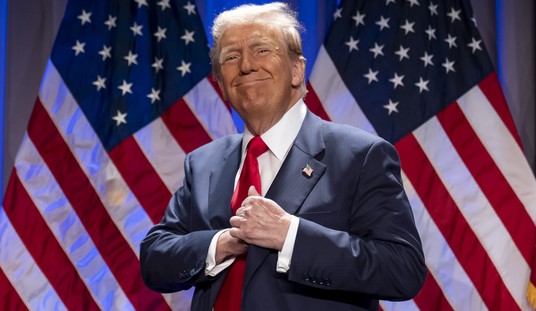In the 1990s, celebrated boxing enthusiast Senator John McCain stepped into the ring to do battle against another combat sport. He denounced what was then called extreme fighting as “human cockfighting.” He argued that unlike the sweet science, the nascent sport was barbaric and should be banned outright. At the time, he was perhaps correct.
The earliest event, staged in November of 1993 and aired on pay-per-view, was advertised under the tagline: “There are no rules!” The concept was to hold a tournament which would prove which fighting style was most effective (for example, who would prevail if a boxer fought a karate master). The only way a match could end was by knockout or submission. There were no weight classes, which was underscored by the very first fight of the tournament. The bout pitted a sumo wrestler against a kickboxer, the latter of whom was able to prevail in just a few seconds despite his distinct size disadvantage by kicking his opponent’s teeth out.
This was savage fare, granted. But since those days, “extreme” fighting has evolved into a legitimate sport known as Mixed Martial Arts, or MMA. The premiere promoter of MMA is an organization called Ultimate Fighting Championship (UFC). The UFC has become a billion-dollar global brand. The UFC has been the focus of two CNBC documentaries and has inspired a book of fine art photography. It does brisk sales in t-shirts and other apparel, and even lends its name to a franchise of gyms.
Much of the credit for this turnaround belongs to Dana White, a brash and tough-talking ex-boxing promoter who is the UFC’s president. White, himself a fan of the UFC, heard that the promotion was for sale back in 2001. He convinced his high school friends the Fertitta brothers — who just happened to own the Station chain of Las Vegas casinos — that they should buy the sagging brand. They boosted the public image of the sport by creating a rigorous set of rules with emphasis on competitor safety. They worked with state sanctioning organizations like the Nevada State Athletic Commission to institutionalize these rules.
With this enhanced credibility came new opportunities for expansion. These included a basic cable reality show and sponsorship by mainstream companies like Bud Light, Burger King, and Harley Davidson. The brand grew to the point that one of the Fertitta brothers left the casino industry to focus on what had been a side business. And business has been good for all. Rival MMA promoter Strikeforce, for example, televises matches on CBS.
Despite the evolution of MMA into a highly sanctioned sport, it is still illegal in several states. The largest of these holdouts is New York, where MMA has been banned since the bad old days of 1997. Dana White, aided by some of his most notable fighters, has been lobbying the state to legalize MMA for years. Despite coming tantalizingly close, the ban has yet to be lifted. But the numbers are on White’s side. An economic impact study he commissioned shows the tangible benefits New York is missing out on to neighboring states like New Jersey and Pennsylvania, which do sanction MMA. Premiere sporting venue Madison Square Garden has openly expressed its desire to host the UFC. None of this is lost on embattled Governor David Paterson, who has proposed legalizing MMA as a way to raise revenue for his cash-strapped state.
Standing in Paterson’s way are those such as Assemblyman Bob Reilly, an upstate Democrat who chooses to remain blithely ignorant on the subject of MMA. Reilly sent a letter to the state assembly speaker asking for the removal of MMA legalization from the budget. He opposes the sport ostensibly because legalization would contribute to a culture of violence. He casts himself as a moral crusader, frequently citing examples of violence against gays and women, and stories of schoolyard bullying, though he fails to offer any links to MMA.
Reilly and others who are reflexively opposed to MMA should learn a bit more about the sport. I myself am not an MMA practitioner, but I train in the art of Shotokan Karate under Sensei Kai Leung. Some of the more talented students from my dojo recently held a show at Lincoln Center for the Performing Arts called “Balance in Two Worlds,” in which they blended the power of martial arts with the beauty of classical music. The title of that show is an apt metaphor for MMA itself.
Inside of the ring, MMA competitors make fierce use of their martial skills. But after the fight, it is not uncommon for two opponents to hug or make other gestures of mutual respect. This is not surprising given the kind of men who compete. These are not brainless thugs, but former high school teachers, ex-Olympians and other elite athletes, and family men. Many are even veterans and people of faith.
And while what goes on inside of the ring might look like wanton violence to casual observers, it’s actually an elaborate dance which is commonly likened to a “kinetic chess match.” Any given bout might incorporate the powerful linear striking of Shotokan, favored by a current champion, Lyoto Machida; the strength of Olympic wrestling; the expert use of leverage employed in jiu-jitsu; or skills drawn from a host of other arts. I will spare the reader the history lesson on MMA’s links to pankration, an event which the ancient Greeks included in the original Olympic games.
Many detractors who watch an MMA match for the first time are forced to admit that the contests are a real display of skill as opposed to unregulated savagery. They come to understand that although they might not choose to watch MMA on their own time, the sport is about honor, grace, and the controlled use of force. My own wife falls in this category.
In short, MMA is far from the “human cockfighting” of the early days. It is broadcast either late at night or on paid television, so those who don’t want to be subjected to violence can easily avoid it. The participants are all rational individuals who choose to compete. And there are stringent regulations in place to protect those who do.
So why do people like Reilly insist that MMA should remain illegal in New York? If nothing else, it’s not the government’s business to hinder a growing sport that voluntarily submits to regulatory oversight. And at worst, they are actually encouraging unsanctioned underground matches through their failure to act, and losing the state money at a time when our finances are being beaten to a bloody pulp. Royce Gracie, a legendary competitor whose family is integral to the history of MMA, said it best: “It’s wrong … to [deny MMA] just because some people, usually who know nothing about the sport and have never seen it, don’t want it around. … If you are not interested in MMA, don’t buy a ticket. It’s un-American to deny MMA fans the fun and entertainment that a live event would bring just because you don’t like it.”









Join the conversation as a VIP Member